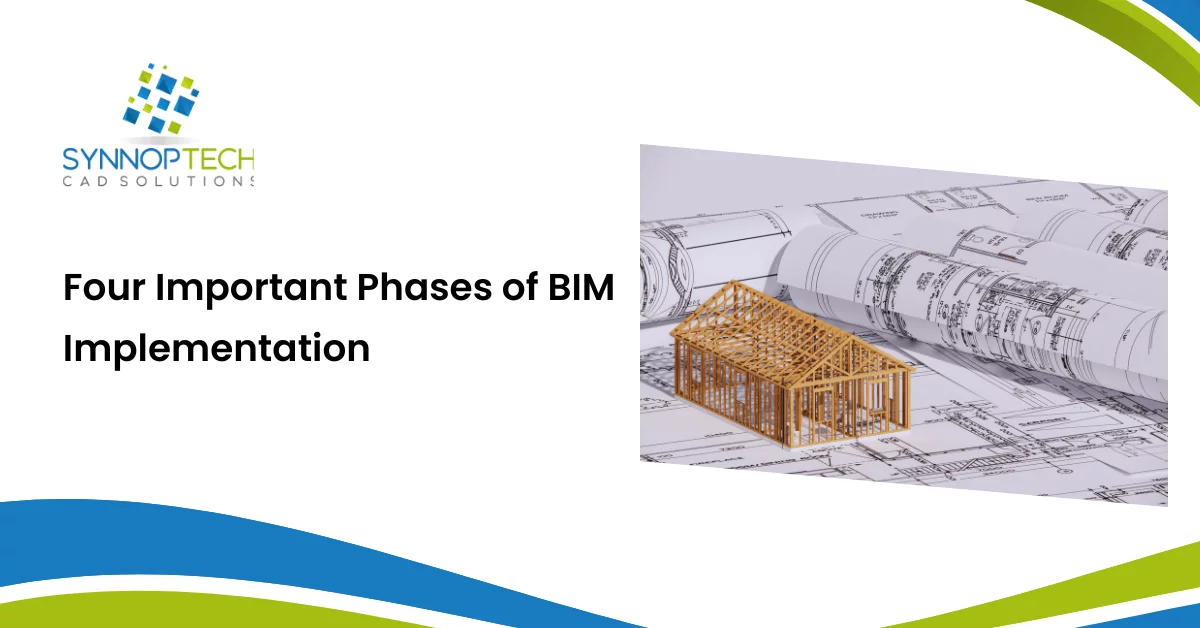Building Information Modeling (BIM) is a powerful technology that provides architects, engineers, and construction professionals with a comprehensive digital design solution. This innovative method empowers architects to create detailed and accurate digital models that manage all aspects of the architectural process. The successful implementation of BIM requires careful planning, preparation, and execution.
In this blog, we will discuss the four essential phases of BIM implementation, covering everything from establishing a solid framework to planning and evaluating progress.
THE FOUR PHASES OF BIM IMPLEMENTATION
Evaluation
Evaluating BIM implementation is an important first step in deciding what goals to reach. This stage requires an evaluation of the organisation’s current BIM abilities and requirements. The first thing required is to create an internal strategic plan and goals for implementing BIM. Some best practices that help in the early phases of implementation are;
- Analyse the team’s equipment, techniques, and operational capabilities.
- Collect feedback from within the organisation.
- Assess any legal implications.
- Ensure complete support from higher authority for BIM implementation.
Project Planning
Before beginning a BIM project, it is vital to complete some specific preliminary tasks to ensure its success. This includes developing a BIM execution plan, creating a BIM coordination model, and selecting the appropriate software and hardware. This can be done by standardized techniques and an appropriately qualified internal team.
You can also read: 5 Aspects to Consider Before Selecting a BIM Partner
Design and Construction
In the third phase, an architectural project’s design and construction can be viewed as a single interconnected system. The other BIM features, such as programming, estimating, and others, can all assist in the design process. The 3D models designed during this phase will subsequently serve as a template for the actual construction procedure. But before that, tasks and other resources must be identified to make the design a reality.
Operations and Maintenance
Operations and maintenance are the last phase of BIM implementation. This process includes tasks such as preventive and corrective maintenance, asset management, and such that assist in ensuring the building operates efficiently on a regular basis. The design phase’s digital model can be used as a preliminary step for O&M. Virtual platforms that include BIM technology are highly recommended for a smoother transition during handover and commissioning.
Conclusion
BIM adoption is critical for every construction project since it allows a streamlined workflow and helps the entire process function smoothly. However, every organisation has different needs and structures, and the procedures followed during implementation may differ. We hope this blog sheds some light on these four important BIM phases. It can be a valuable asset in any building project with proper design and implementation.
You can also read: What are the benefits of MEP shop drawings for building contractors?


